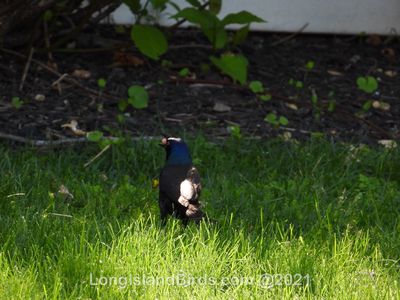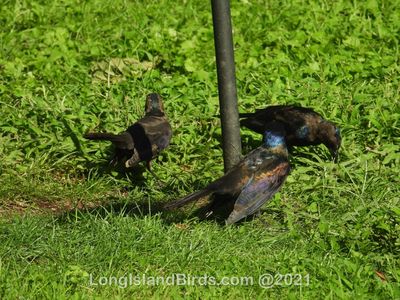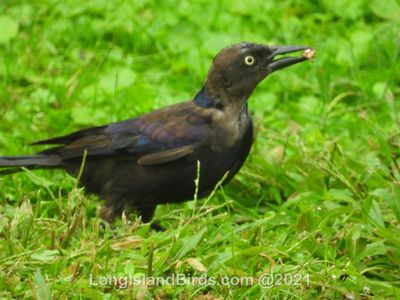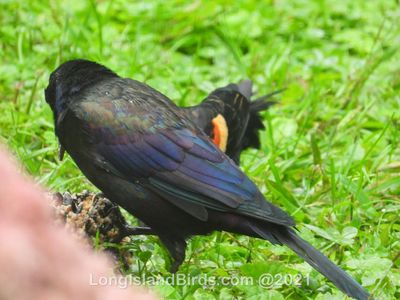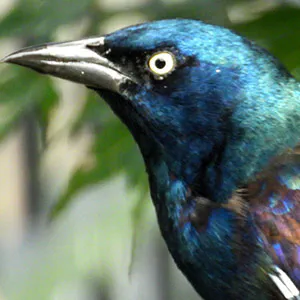
The common grackle (Quiscalus quiscula) is a large icterid found in large numbers through much of North America.
First described in 1758 by Carl Linnaeus, the common grackle has three subspecies. Adult common grackles have a long and dark bill, pale yellow eyes, and a long tail. Adults often have an iridescent appearance on their head, especially males. Common grackles are found in much of North America east of the Rocky Mountains.
Relationship with humans
The range of this bird expanded west as forests were cleared. In some areas, it is now considered a pest by farmers because of its large numbers and fondness for grain. Despite a currently robust population, a recent study by the National Audubon Society of data from the Christmas Bird Count indicated that populations had declined by 61% to a population of 73 million from historic highs of over 190 million birds.
As a result, it is now classified by the IUCN as Near Threatened.
Unlike many birds, the common grackle benefits from the expansion of human populations due to its resourceful and opportunistic nature. Common grackles are considered to be a serious threat to crops by some, and are notoriously difficult to control; this usually requires the use of hawks or similar large birds of prey.
Proposed magnetoreceptivity
Though the exact mechanism is poorly understood, several studies have examined the ability of the common grackle to interpret the Earth’s magnetic field—or in this case, the variability of it. The common grackle (like most of its Quiscalus relatives) has been found to be attuned to a dynamic magnetic field to a scientifically significant degree.
Gallery
Common Grackle
- #

